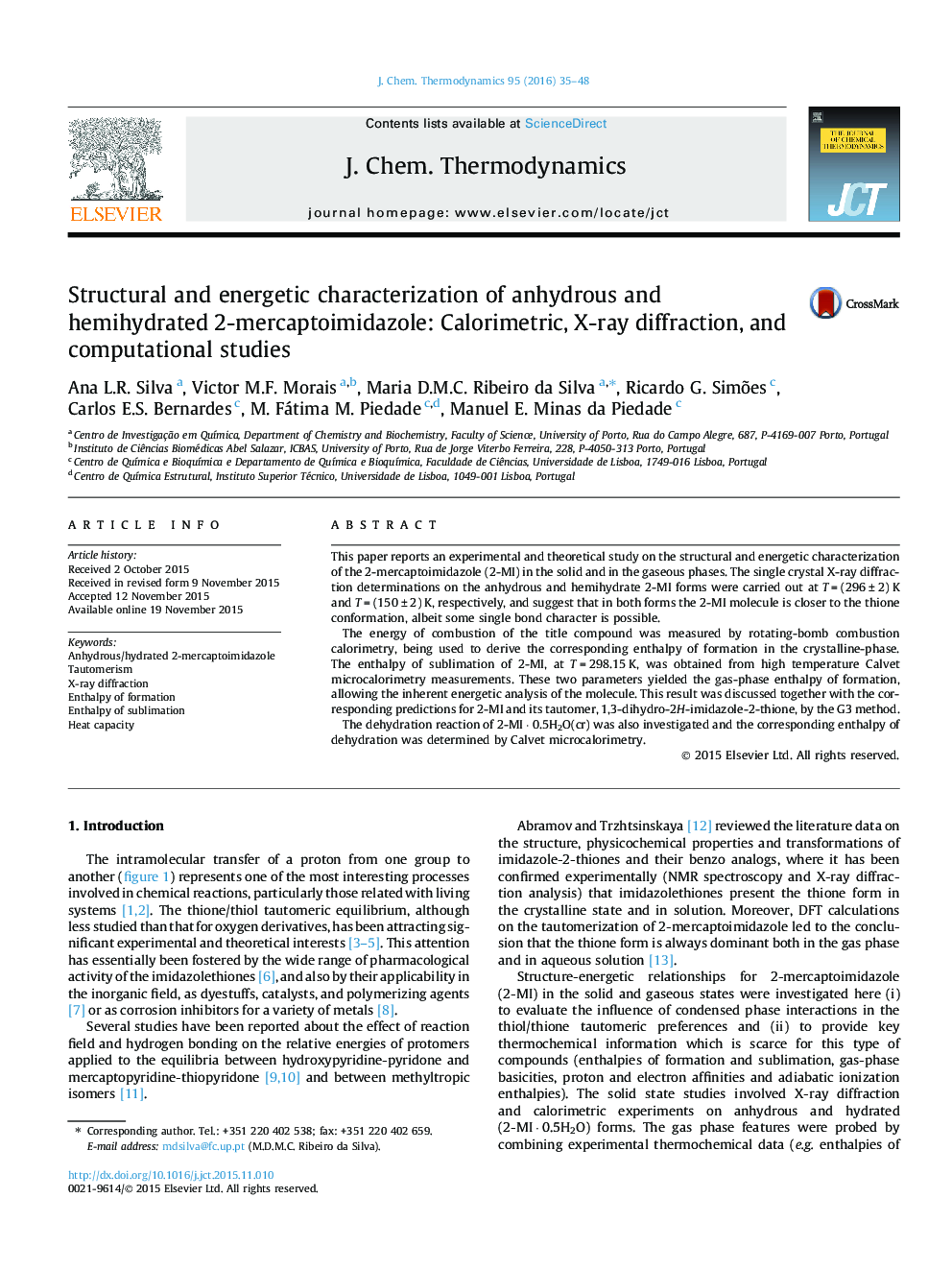| Article ID | Journal | Published Year | Pages | File Type |
|---|---|---|---|---|
| 215087 | The Journal of Chemical Thermodynamics | 2016 | 14 Pages |
•Rotating-bomb combustion calorimetry was used to obtain the enthalpy of formation of crystalline 2-mercaptoimidazole.•Enthalpy of sublimation of 2-mercaptoimidazole was measured by Calvet microcalorimetry.•Enthalpy of interaction between substituents is calculated using isodesmic reactions.•Crystal X-ray diffraction determinations for anhydrous and hemihydrate 2-mercaptoimidazole forms were carried.•Gas-phase enthalpies of formation of 2-mercaptoimidazole and 1,3-dihydro-2H-imidazole-2-thione estimated by the G3 method.
This paper reports an experimental and theoretical study on the structural and energetic characterization of the 2-mercaptoimidazole (2-MI) in the solid and in the gaseous phases. The single crystal X-ray diffraction determinations on the anhydrous and hemihydrate 2-MI forms were carried out at T = (296 ± 2) K and T = (150 ± 2) K, respectively, and suggest that in both forms the 2-MI molecule is closer to the thione conformation, albeit some single bond character is possible.The energy of combustion of the title compound was measured by rotating-bomb combustion calorimetry, being used to derive the corresponding enthalpy of formation in the crystalline-phase. The enthalpy of sublimation of 2-MI, at T = 298.15 K, was obtained from high temperature Calvet microcalorimetry measurements. These two parameters yielded the gas-phase enthalpy of formation, allowing the inherent energetic analysis of the molecule. This result was discussed together with the corresponding predictions for 2-MI and its tautomer, 1,3-dihydro-2H-imidazole-2-thione, by the G3 method.The dehydration reaction of 2-MI · 0.5H2O(cr) was also investigated and the corresponding enthalpy of dehydration was determined by Calvet microcalorimetry.
